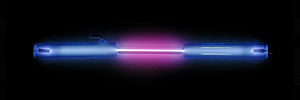Template:Infobox hydrogen/sandbox
Jump to navigation
Jump to search
[[Category:Template:Pagetype with short description]]
 Purple glow in its plasma state | |||||||||||||||||||||
| Hydrogen | |||||||||||||||||||||
|---|---|---|---|---|---|---|---|---|---|---|---|---|---|---|---|---|---|---|---|---|---|
| Appearance | colorless gas | ||||||||||||||||||||
| Standard atomic weight Ar, std(H) | [[[:Template:Val]], Template:Val] conventional: Template:Val | ||||||||||||||||||||
| Hydrogen in the periodic table | |||||||||||||||||||||
| |||||||||||||||||||||
| Atomic number (Z) | 1 | ||||||||||||||||||||
| Group | 1: H and alkali metals | ||||||||||||||||||||
| Period | period 1 | ||||||||||||||||||||
| Block | s-block | ||||||||||||||||||||
| Electron configuration | 1s1 | ||||||||||||||||||||
| Electrons per shell | 1 | ||||||||||||||||||||
| Physical properties | |||||||||||||||||||||
| Phase at STP | gas | ||||||||||||||||||||
| Melting point | 13.99 K (−259.16 °C, −434.49 °F) | ||||||||||||||||||||
| Boiling point | 20.271 K (−252.879 °C, −423.182 °F) | ||||||||||||||||||||
| Density (at STP) | 0.08988 g/L | ||||||||||||||||||||
| when liquid (at m.p.) | 0.07 g/cm3 (solid: 0.0763 g/cm3)[1] | ||||||||||||||||||||
| when liquid (at b.p.) | 0.07099 g/cm3 | ||||||||||||||||||||
| Triple point | 13.8033 K, 7.041 kPa | ||||||||||||||||||||
| Critical point | 32.938 K, 1.2858 MPa | ||||||||||||||||||||
| Heat of fusion | (H2) 0.117 kJ/mol | ||||||||||||||||||||
| Heat of vaporization | (H2) 0.904 kJ/mol | ||||||||||||||||||||
| Molar heat capacity | (H2) 28.836 J/(mol·K) | ||||||||||||||||||||
Vapor pressure
| |||||||||||||||||||||
| Atomic properties | |||||||||||||||||||||
| Oxidation states | −1, +1 (an amphoteric oxide) | ||||||||||||||||||||
| Electronegativity | Pauling scale: 2.20 | ||||||||||||||||||||
| Ionization energies |
| ||||||||||||||||||||
| Covalent radius | 31±5 pm | ||||||||||||||||||||
| Van der Waals radius | 120 pm | ||||||||||||||||||||
| Spectral lines of hydrogen | |||||||||||||||||||||
| Other properties | |||||||||||||||||||||
| Natural occurrence | primordial | ||||||||||||||||||||
| Crystal structure | hexagonal | ||||||||||||||||||||
| Speed of sound | 1310 m/s (gas, 27 °C) | ||||||||||||||||||||
| Thermal conductivity | 0.1805 W/(m·K) | ||||||||||||||||||||
| Magnetic ordering | diamagnetic[2] | ||||||||||||||||||||
| Magnetic susceptibility | −3.98·10−6 cm3/mol (298 K)[3] | ||||||||||||||||||||
| CAS Number | 12385-13-6 1333-74-0 (H2) | ||||||||||||||||||||
| History | |||||||||||||||||||||
| Discovery | Henry Cavendish[4][5] (1766) | ||||||||||||||||||||
| Named by | Antoine Lavoisier[6] (1783) | ||||||||||||||||||||
| Main isotopes of hydrogen | |||||||||||||||||||||
| |||||||||||||||||||||
| → He | ||
| ||
| Data sets read by {{Infobox element}} | |
|---|---|
| Name and identifiers | |
| Top image (caption, alt) | |
| Pronunciation | |
| Category (enwiki) | |
| Standard atomic weight | |
| most stable isotope | |
| Natural occurrence | |
| Phase at STP | |
| Oxidation states | |
| Spectral lines image | |
| Electron configuration (cmt, ref) | |
| Term symbol * (cmt, ref) | |
| Wikidata * | |
| * Not used in {{Infobox element}} (2019-02-03) See also {{Infobox element/symbol-to--navbox}} | |
References
- ↑ Wiberg, Egon; Wiberg, Nils; Holleman, Arnold Frederick (2001). Inorganic chemistry. Academic Press. p. 240. ISBN 978-0123526519.
- ↑ Lide, D. R., ed. (2005). "Magnetic susceptibility of the elements and inorganic compounds". CRC Handbook of Chemistry and Physics (PDF) (86th ed.). Boca Raton (FL): CRC Press. ISBN 978-0-8493-0486-6.
- ↑ Weast, Robert (1984). CRC, Handbook of Chemistry and Physics. Boca Raton, Florida: Chemical Rubber Company Publishing. pp. E110. ISBN 978-0-8493-0464-4.
- ↑ "Hydrogen". Van Nostrand's Encyclopedia of Chemistry. Wylie-Interscience. 2005. pp. 797–799. ISBN 978-0-471-61525-5.
- ↑ Emsley, John (2001). Nature's Building Blocks. Oxford: Oxford University Press. pp. 183–191. ISBN 978-0-19-850341-5.
- ↑ Stwertka, Albert (1996). A Guide to the Elements. Oxford University Press. pp. 16–21. ISBN 978-0-19-508083-4.
Three of these references are named references. They may be cited in the containing articles as
- <ref name="Nostrand" /> for the source from Van Nostrand's Encyclopedia
- <ref name="nbb" /> for the source from Nature's Building Blocks
- <ref name="Stwertka" /> for the source from A Guide to the Elements
Lua error: Internal error: The interpreter has terminated with signal "24".

